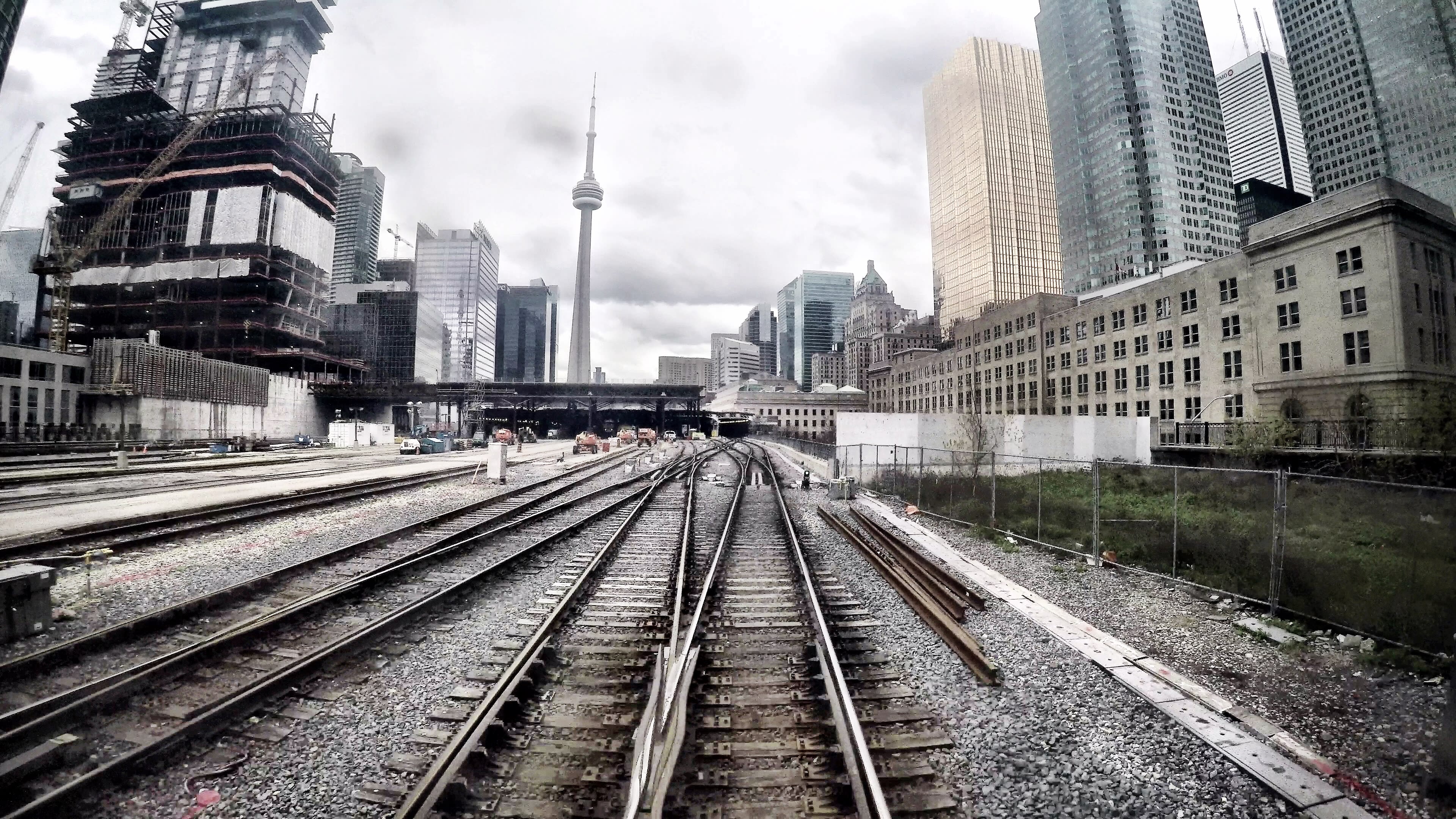The mystery of how Toronto’s Union Station platform numbers work
There’s reasoning, history and math behind Union's platform numbers - we’ll show you how it adds up.
Jan 17, 2022
Now boarding at Toronto’s most travelled rail hub, a bit of confusion on how the platform numbers work.
For example, where the heck is Platform 2? Or 23?
After the recent reopening of historic Platform 3, transit fans have asked about the unusual sequencing of how the train stops are numbered.
Pencils ready? Here’s the background and formula.
In 2008, when the platforms at Union Station were renumbered, emphasis was placed on creating a pattern to help operational staff understand how best to make announcements and with the hopes of creating a ‘mental map’ for customers.
The tracks leading into the Union Station train shed. (Matt Llewellyn photo)
To best do this, the platform numbers needed to be tied to the corresponding numbers of the tracks that service each stop. Tracks are numbered from north to south, starting at number one (the most north track in the train shed) through to 14 at the very south of the station.
A pro transit tip here – the higher the track number the further south of Front Street.
As we mentioned, platforms are numbered based on the track that they serve. So here’s the math we promised.
The platform edge south of the track is twice the track number, and the platform edge north of the track is one less than that. This plan works well for most of the station, with track 4 being served by Platform 8 to the south – making the south platform calculation ‘platform times track’ (4 x 2) and math for the north platform ‘platform times track minus one”’ (4 x 2 – 1).
Light from above shines down on the platforms of Union Station. Hopefully, this article has also been illuminating, as far as how each of the platforms is numbered. (Stacey Kenny photo)
Just like high school algebra, we never said you wouldn’t have to do some counting on your fingers.
The tracks are also numbered from north to south, and most, but not all, are served by platforms on both sides of the track. However, there is no platform between tracks 1 and 2 or between tracks 11 and 12. This is where a numbering gap is created. As a result, there is no Platform 2 (south of track one) or 3 (north of track two), and no Platform 22 or 23 since it is essentially a non-existent platform between tracks 11 and 12.
So, applying the platform numbering formula looks like this – the most north track is track one, abutted immediately to the south by track two. So, the platform immediately south of track two is Platform 4 (2 x 2), and as a result, the platform north of track 1 is, by default, Platform 3 (2 x 2 – 1).
How the platforms line up. (Metrolinx image)
Wait…what about a past A and B designation?
Prior to the renumbering, the platforms were numbers using A/B designations, which proved confusing for customers and operators. The renumbering abandoned the A/B designations and numbered the platforms consecutively.
In May 11, 2009, two new platforms opened, 25 (the south side of 24) and 26/27 the most south platform at Union Station.
Are there ‘mysterious missing platforms’ related to the TTC?
Folklore has it that the ‘missing Platforms 1 and 2 are the TTC platforms at Union Station, but it’s just not the case. The TTC’s system is completely separate from GO Transit’s. And while we are debunking myths, nor is the UP Express platform, just west of Platform 3, factored into this numbering equation within the trainshed.
So now that we’ve got that cleared up, it’s almost time to embark on the Union Station Enhancement Project. This project will realize the construction of the transit infrastructure and upgrades at the southernmost part of Union Station, which included in the package of work is construction of two new platforms, and creation of two new south tracks. And with that, new track and platform numbers. How that will affect platform and track numbering is a bit of math, and future history, for another day.
Bring your calculator.
by Stacey Kenny Metrolinx corporate communications manager
